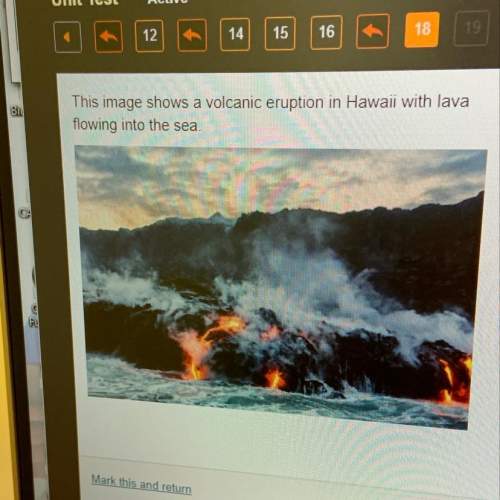
Biology, 07.04.2021 01:00 ashiteru123
Please keep in mind I would prefer it if someone actually answered the over view of the lab. I already completed ALL the other questions soo, Please help?
1. What is the purpose of the lab?
The main purpose of lab is to perform different experiments and importance of the topic that it supports.
2. What procedure did you use to complete the lab?
Outline the steps of the procedure in full sentences.
I made a hypothesis, observed my experiments, used a procedure, had and prepared materials that are needed, evidence that support my thesis, and made a conclusion.
Section II: Observations and Conclusions
3. What charts, tables, or drawings would clearly show what you have learned in this lab?
Each chart, table, or drawing should have the following items:
a. An appropriate title
b. Appropriate labels
Bases Acids
Freshwater Increases pH making it a harsher environment that animals can’t live in. Decreases pH having a similar effect of environmental change as bases.
Groundwater Doesn’t have much effect until water from the lake, pond, other freshwater sources leaks into the groundwater affecting our water supply. Acids have the same effect on the water, although I did notice (for both acids and bases) that the slow buildup temporarily stopped the flow of the freshwater to the groundwater and the opposite way around.
4. If you could repeat the lab and make it better, what would you do differently and why?
There are always ways that labs can be improved. Now that you are a veteran of this lab and have experience with the procedure, offer some advice to the next scientist about what you suggest and why. Your answer should be at least two to three sentences in length.
I would attempt to visit multiple sites instead of one. Visiting one body of water you would only get to use water from that site. For future reference, see if it’s possible to go to multiple different water sources. If this does happen to be possible, you would be able to experiment with your water more and using water from different locations. I find this exciting because you would also be able to see how the water differs in colors and/or pH.
Writing the Lab Report
Now you will use your answers from the four questions above to write your lab report. Follow the directions below.
Section I: Overview of Lab
Use your answers from questions 1 and 2 (above) as the basis for the first section of your lab report. This section provides your reader with background information about why you conducted this lab and how it was completed. It should be one to two paragraphs in length.
Section II: Observations and Conclusions
Use your answers from questions 3 and 4 (above) as the basis for the second section of your lab report. This section provides your reader with charts, tables, or drawings from the lab. You also need to incorporate your answers to the follow-up questions (from the Student Guide) in your conclusions.
Overall
When complete, the lab report should be read as a coherent whole. Make sure you connect different pieces with relevant transitions. Review for proper grammar, spelling, punctuation, formatting, and other conventions of organization and good writing.
Thanks if you did help!

Answers: 1


Another question on Biology

Biology, 22.06.2019 03:30
Beth’s hygrometer is reading a temperature of 30 c and a relative humidity of 65%. the humidity in the air is?
Answers: 2

Biology, 22.06.2019 12:30
Creating new things to solve problems and improve life depends on the close interaction of which two fields?
Answers: 2

Biology, 22.06.2019 16:00
Autonomous underwater explorers will be used to gather large-scale ocean information select the best answer from the choices provided ot
Answers: 1

Biology, 22.06.2019 23:00
Need ! will give 20 points! what are two ways that diatoms differ from slime molds? the external coverings of diatoms are made up of (silica, chitin or peptidoglycan), while slime molds have cell walls containing (silica, peptidoglycan or chitin). diatoms are (chemoheterotrophs, photoautotrophs or chemoautotrophs) because they make food through photosynthesis, while slime molds are (heterotrophs, phototrophs or autotrophs) because they eat decaying plant matter.
Answers: 3
You know the right answer?
Please keep in mind I would prefer it if someone actually answered the over view of the lab. I alrea...
Questions

Physics, 01.08.2019 22:00





Mathematics, 01.08.2019 22:00


English, 01.08.2019 22:00







English, 01.08.2019 22:00


Mathematics, 01.08.2019 22:00



Computers and Technology, 01.08.2019 22:00




